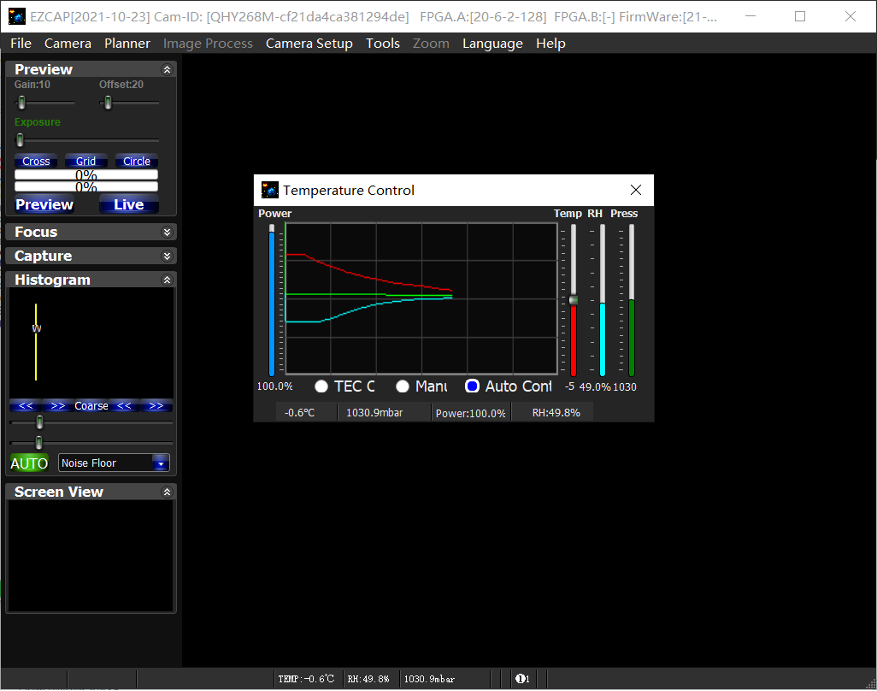QHY268M-PH Monochrome Photographic APS-C Camera
Starting Price: $2,639.00
Price as Configured: $2,639.00
Price as Configured: $2,639.00
Brand: QHYCCD / SKU: QHY-110080
The QHY268M/C is a new generation of back-illuminated CMOS cameras with true 16-bit A/D and 3.76um pixels. This Sony sensor is an ideal CMOS sensor exhibiting no amplifier glow. 16-bit A/D gives high resolution sampling of the whole full well range. Digitizing 0-65535 levels yields a smooth image with continuous gradation of grayscale levels.
With the advantage of low readout noise and high-speed readout, CMOS technology has revolutionized astronomical imaging. This monochrome, back-illuminated, high-sensitivity, astronomical imaging camera is the ideal choice for astro-imagers.

Need help deciding?
Tell us what you're looking for, and we’ll point you in the right direction. Email Us.
Tell us what you're looking for, and we’ll point you in the right direction. Email Us.
NEW IN 2023
Since January 2023, the top part of QHY268C will change to the shorter one just like that of 268M. In fact, you can get the “SBFL (shorter back focal length)” version of 268C right now. The previous 268C has a back focal length of 17.5mm, and since it cannot connect to the scope without a camera angle adjuster, so its actual BFL is 17.5mm+6mm=23.5mm. Now, 268C’s BFL is 14.5mm providing more space for a filter wheel drawer, an electric camera angle adjuster, or DSLR Lens, etc.
Since June 2023, the position of the heating board of the QHY268/QHY600 SBFL Series is raised by about 5mm, which will decrease the likelihood of fogging. This change will not affect the back focal length calculations or any other function. The mono cameras will use the same adapter kit as before. The color cameras will have a different adapter kit (G1) as a standard accessory which will be supplied with the camera.
Features
In order to provide smooth uninterrupted data transfer of the entire 26MP sensor at high speed, the QHY268 has 1GB DDR3 image buffer. The pixel count of the latest generation of CMOS sensors is very high resulting in greater memory requirements for temporary and permanent storage. The QHY268 has a large-capacity memory of up to 1GB. Data throughput is doubled. This large image buffer meets the needs of high-speed image acquisition and transmission of the new generation of CMOS, making shooting of multiple frames smoother and less stuttered, further reducing the pressure on the computer CPU.
Extended Full Well Capacity and Multiple Read Modes
With a pixel size of 3.76um, these sensors already have an impressive full well capacity of 51ke. Nevertheless, QHYCCD has implemented a unique approach to achieve a full well capacity higher than 51ke- through innovative user controllable read mode settings. In extended full well readout mode, the QHY268 can achieve nearly 75ke-. Greater full-well capacity provides greater dynamic range and large variations in magnitude of brightness are less likely to saturate.
Internal Humidity Sensor
QHY268M has a unique internal humidity sensor (while QHY268C does not). The Blue curve shown below represents humidity.
Native 16 bit A/D: The Sony sensor has native 16-bit A/D on-chip. The output is real 16-bits with 65536 levels. Compared to 12-bit and 14-bit A/D, a 16-bit A/D yields higher sample resolution and the system gain will be less than 1e-/ADU with no sample error noise and very low read noise.
BSI: One benefit of the back-illuminated CMOS structure is improved full well capacity. This is particularly helpful for sensors with small pixels. In a typical front-illuminated sensor, photons from the target entering the photosensitive layer of the sensor must first pass through the metal wiring that is embedded just above the photosensitive layer. The wiring structure reflects some of the photons and reduces the efficiency of the sensor. In the back- illuminated sensor, the light is allowed to enter the photosensitive surface from the reverse side. In this case the sensor’s embedded wiring structure is below the photosensitive layer. As a result, more incoming photons strike the photosensitive layer, and more electrons are generated and captured in the pixel well. This ratio of photon to electron production is called quantum efficiency. The higher the quantum efficiency, the more efficient the sensor is at converting photons to electrons, and hence the more sensitive the sensor is to capturing an image of something dim.
Zero Amplify Glow: This is also a zero amplifier-glow camera.
True Raw Data: QHY Cameras offer true raw image output and produce an image comprised of the original signal only, thereby maintaining the maximum flexibility for post-acquisition astronomical image processing programs and other scientific imaging applications.
Anti-Dew Technology: Based on almost 20-year cooled camera design experience, QHY cooled cameras have implemented a full dew control solution. The optic window has a built-in dew heater and the chamber is protected from internal humidity condensation. An electric heating board for the chamber window can prevent the formation of dew and the sensor itself is kept dry with a silicon gel tube socket design for control of humidity within the sensor chamber.











